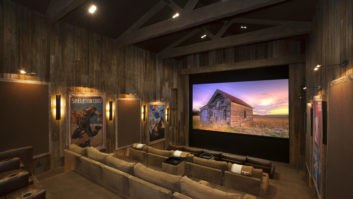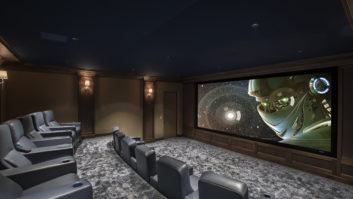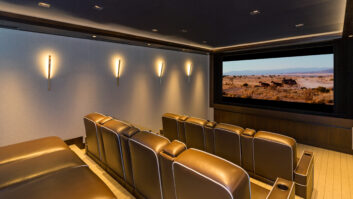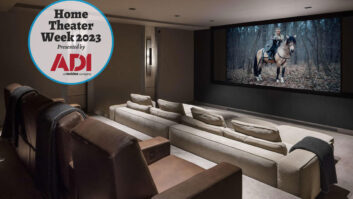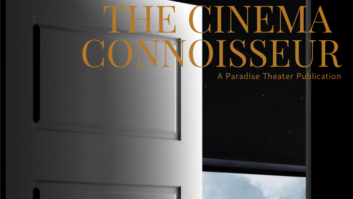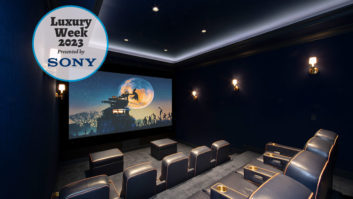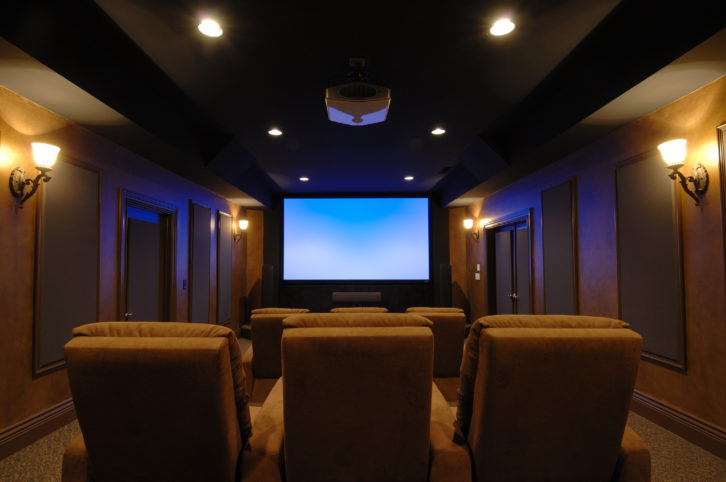
Some popular proclamations may sound good at first, but after deeper deliberation, less so. For prospective home theater owners, this discernment often happens too late and course correction can be costly and prohibitive. When a private cinema designer or consultant encounters such perceptions from prospective clientele, how do we react? Do we allow ourselves to be led by popular opinion, or do we do our clients and industry a real service and expose the impact of pursuing convenience over excellence? Our objective will determine our direction. If our goal is to enrich our client’s experience, appreciation, and enjoyment of their private cinema and subsequently improving the health of our industry, the choice is clear. Let’s take a look beneath the surface of a few of these popular statements and see what lies therein.
“Buying my home theater equipment as a package eliminates all the thinking, it’s a no-brainer!”
Packaged systems can be a very good idea if they are supported with the required engineering, confirming compatibility and appropriateness for the specific application. Unfortunately, this is not what we see. We are often presented with a package of electronics that proves to be inadequate for the room. These packages usually get selected to meet a budget, which is the classic conundrum.
A better route is to engineer the system for performance. For instance, engineering for speaker systems should include sound power calculations, directivity studies, and much more. These studies are room-specific and need to be confirmed for every application. Similar performance engineering is necessary for the entire audio-video system to assure performance criteria are met. In addition, schematic documentation of the signal flow and wiring are needed to ensure compatibility and provide support documentation going forward.
Fortunately, clients will respond well to engineering studies that indicate a defined level of system performance. If the engineering is performed prior to the budget discussion, the price becomes less of a stumbling block. If the budget has become the primary consideration before the client has an appreciation of what is required for their private cinema to be great, it is often a difficult issue to overcome. Wouldn’t it be great if the prevailing sentiment became, “I am so glad my system was engineered for performance, it made the investment worry-free because I know it’s going to be great!”
Also by Sam Cavitt: Immersive Sound: More Than a Numbers Game
“The computer renderings look really good, almost real, and the whole package is already priced out. It’s inexpensive, doesn’t take up much space, and it’s easy and quick to install. What more could I ask for?”
We hear this a lot. Computer renderings are great sales tools and we do find them useful. Although, if a choice is to be made between computer renderings and parametric 3D modeling, detailed construction documentation, and exhaustive performance engineering, computer rendering would be the first to go. Why? Because although a rendering may show the surface, the less sexy design and engineering process reveals the true beauty that lies within.
Leading with renderings, price points, and convenience puts the emphasis on the wrong things, leading the consumer to the impression that these are the important considerations instead of performance and deliberate, comprehensive design and engineering. One result of this is inappropriate and ineffective acoustical devices being sold, such as 1-inch to 2-inch absorbers and diffusers, not because the correct devices are so expensive, but because engineering and planning for them takes skill and they are not easy to fit into cookie-cutter designs. Similarly, sound isolation construction is considered a secondary option rather than a necessity. Rooms with noise floors well over 30 dB are the norm. The truth is with a background noise level over 20-25 dB, much of the nuance and detail of movie soundtracks and music is lost. It would be comparable to drinking a fine wine out of a dirty glass. Much of the fine distinction would be obscured by the tainted container.
Even the “skin” of many theaters is inappropriate. In another nod to convenience, the typical purveyors of “acoustical” fabric are the default suppliers. Unfortunately, even those publishing test results underperform, rendering attenuated speaker response like one might experience after sitting through a Def Leppard concert without ear plugs! Pun intended! It will serve both the clientele and our industry better if our clientele were advised to eschew the cheap, easy, and fast and look instead for the beauty within.
“Streaming has hit movies, classics, and even current releases that I can watch on any of my devices. I like the convenience and low cost.”
This happens to the best of them! Recently when auditioning a client’s theater, we were blown away by the accuracy and impact of the room and system when listening to master quality audio. The client, who claimed “music is my life,” had curated a large library of HD audio tracks and had a custom interface to sort and store his music. When we switched to movie soundtracks, however, we were equivalently underwhelmed. The client had opted for the convenience of Apple TV over a solution that would provide better audio and video resolution. This system, which included loudspeakers found typically in only the finest post-production studios, sounded like a budget theater kit when fed the lossy content! It was like drinking box wine in Waterford crystal.
We were relieved to experience great sound and video again when we switched to the UHD 4K Blu-ray player. Streaming is convenient, but to experience the potential of a great private cinema, we need to guide our clientele away from the convenience and to the sublime. Beware: even some of the latest and most highly touted streaming solutions offer no better than 5.1 surround, compressed audio and video. It is our responsibility to dig deep and lead our clientele to the best experience! The good news is that, with solutions like the Kaleidescape Strato, high-resolution audio and video at all immersive formats is readily available and also very convenient.
Also by Sam Cavitt: Survival of the Finest
“I just want a one-stop-home theater shop…”
A private cinema can involve architecture; structural, mechanical, electrical, acoustic, and system engineering; interior design; rough, finish, and specialty construction; system installation and integration; and coordination of all of the above. Failure to adequately address any of these disciplines will compromise the overall effort. For instance, if a room is beautifully designed, acoustically accurate, well equipped, and solidly constructed but the mechanical system was relegated to an afterthought, resulting in a noisy ventilation system that also transmits sound to and from other rooms, much of the good work was all for naught! Imagine the embarrassment of a formerly proud, one-stop-shop theater owner, when, while sharing their new theater, it became apparent through the AC duct that the adjacent powder room was in use! We have found partnering with the best in each category allows us to coordinate a dream team and deliver the uncompromised experiences our clientele deserve.
Catchphrases, popular opinion, and convenience tend to appear to be wise choices. But for those seeking a great private cinema experience, this conventional wisdom is not what it seems. Ultimately as an industry we need to be asking ourselves: What is the real price of convenience? Our clientele look to us for guidance. There is no other source of information available to the consumer seeking private cinema advice. If we, as an industry, build our success on the shallow allure of convenience, economy, and expedience, we have only ourselves to blame when there are no customers left to appreciate the deeper beauty found only in the extraordinary.
